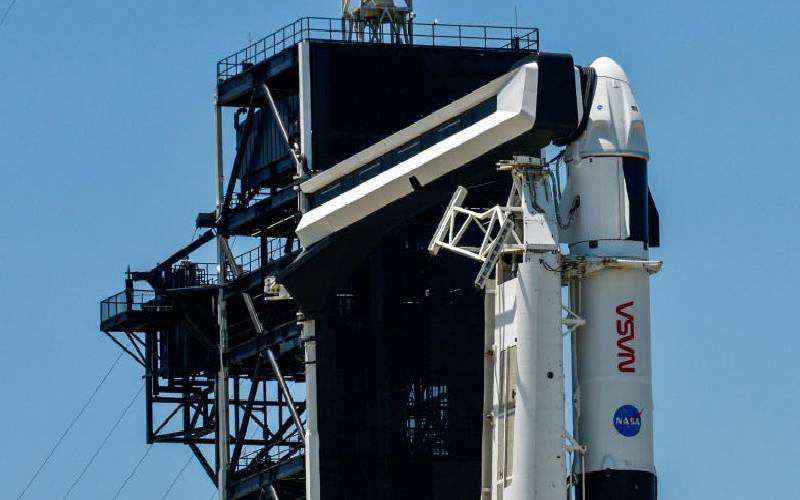
The Crew Dragon capsule sits atop a SpaceX Falcon 9 rocket as it is readied for launch on Pad 39A for a mission to the International Space Station at Kennedy Space Center in Cape Canaveral, Florida, US, April 22, 2021. [Reuters]
NASA and commercial rocket company SpaceX were due to launch a new four-astronaut team to the International Space Station early on Friday in what would be the first crew propelled into orbit by a rocket booster recycled from a previous spaceflight.
The company's Crew Dragon capsule, the Endeavour, was set for liftoff atop a SpaceX Falcon 9 rocket at 5:49 a.m. Eastern time (0949 GMT) from NASA's Kennedy Space Center in Cape Canaveral, Florida.
The nearly 24-hour ride to the space station, which orbits some 250 miles (400 km) above Earth, had been set to begin on Thursday but was delayed for a day by unfavorable weather forecasts along the rocket's flight path.
For the rescheduled launch window on Friday, meteorologists predicted a 90% chance of favorable weather at the launch site, with improving conditions along the flight path.
READ MORE
Pharmacy Board recalls Allied Limited's nasal drops, Efinox
NASA admits tension with Boeing over space rescue plan
The mission marks the second "operational" space station team to be launched by NASA aboard a Dragon Crew capsule since the United States resumed flying astronauts into space from U.S. soil last year, following a nine-year hiatus at the end of the US space shuttle program in 2011.
It is also the third crewed flight launched to into orbit under NASA's fledgling public-private partnership with SpaceX, the rocket company founded and owned by billionaire high-tech entrepreneur Elon Musk. The first was an out-and-back test mission carrying just two astronauts into orbit last May.
Friday's four-member Crew 2 team consists of two NASA astronauts - mission commander Shane Kimbrough, 53, and pilot Megan McArthur, 49, - along with Japanese astronaut Akihiko Hoshide, 52, and fellow mission specialist Thomas Pesquet, 43, a French engineer of the European Space Agency.
"There's nothing like it when you look out the window and see a spaceship getting prepared and realize that you're going to be riding on it in a few days," McArthur said at a news briefing just after arriving at Kennedy Space Center last week.
Long-duration mission
They are expected to spend about six months aboard the orbiting research platform conducting science experiments and maintenance before returning to Earth in the fall.
The four members of Crew 1, sent to the space station in November, are slated to fly home on April 28.
The Crew 2 mission also is special in that its Falcon 9 launch vehicle will fly using the same first-stage booster that lofted Crew 1 into orbit, marking the first time a flight-proven booster will be re-used in a crewed launch.
Reusable booster vehicles, designed to fly themselves back to Earth and land safely once they separate from the rest of the rocket minutes after launch, are at the heart of a re-usable rocket strategy that SpaceX helped pioneer to make spaceflight more economical.
SpaceX has to date logged more than 45 successful Falcon 9 booster return landings, and the company has refurbished and re-used most of them, some for multiple flights, according to National Geographic. But all of those flights, until Friday's mission, carried cargo only, rather than humans into space.
Crew 2's pilot, McArthur, will make a bit of history herself as the first female pilot of the Crew Dragon and the second person from her family to ride aboard a capsule. She is married to NASA astronaut Bob Behnken, who flew the SpaceX demonstration flight with fellow astronaut Doug Hurley last year. The same Crew Dragon was used for that flight as well.
Arriving at the space station if all goes according to plan on Saturday, McArthur and her three crewmates will be welcomed by the four Crew 1 astronauts - three from NASA and one from the Japan Aerospace Exploration Agency JAXA. Two Russian cosmonauts and a US astronaut who shared a Soyuz flight to the space station also are aboard.

